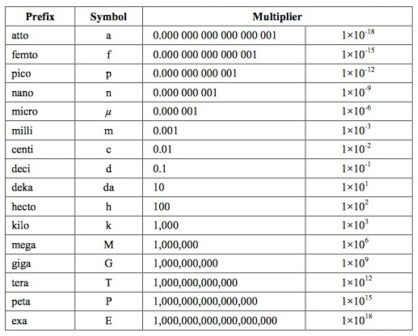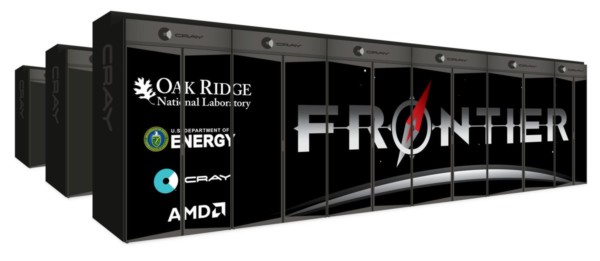
Note: This story was last updated at 3 p.m. May 21.
The U.S. Department of Energy on Tuesday announced a contract with Cray Inc. to build the Frontier supercomputer at Oak Ridge National Laboratory. It is expected to be the world’s most powerful supercomputer when it debuts in 2021.
The contract with Cray is valued at more than $600 million for the system and technology development, a press release said.
Energy Secretary Rick Perry was at ORNL on Tuesday morning to make the announcement.
“This is a big deal,” Perry said. ÔÇťFrontierÔÇÖs record-breaking performance will ensure our countryÔÇÖs ability to lead the world in science that improves the lives and economic prosperity of all Americans and the entire world. Frontier will accelerate innovation in AI (artificial intelligence) by giving American researchers world-class data and computing resources to ensure the next great inventions are made in the United States.ÔÇŁ
Besides the supercomputing announcement on Tuesday, Perry also delivered the keynote speech at InnovationXLab: Advanced Manufacturing Summit at ORNL.
Frontier is expected to perform at greater than 1.5 exaflops. It will be able to solve calculations up to 50 times faster than todayÔÇÖs top supercomputers, exceeding a quintillion, or 1018, calculations per second, the press release said. That’s a billion billion calculations per second.
Oak Ridge Today has previously reported that Frontier would be built at ORNL. But the contract with Cray and its value and the specific performance estimate of more than 1.5 exaflops are all new announcements. The contract award includes technology development funding, a center of excellence, several early-delivery systems, the main Frontier system, and multi-year systems support. The Frontier system is expected to be delivered in 2021, and acceptance is expected in 2022.
Frontier will be installed in the area of the Oak Ridge Leadership Computing Facility where Titan, which was once the world’s most powerful supercomputer, is installed. Titan will be disassembled and removed, and the space will be renovated, including with electrical and cooling upgrades for Frontier. The Oak Ridge Leadership Computing Facility is a DOE Office of Science user facility.
The planning for Frontier began in early 2017, and the project received DOE approval to ÔÇťmove forwardÔÇŁ in late 2017, Morgan McCorkle, ORNL media relations manager, said in February. ORNL had expected to announced the contract this spring.
Supercomputers are large. Titan is as big as a basketball court, and Summit, which is now the world’s most powerful supercomputer, is as big as two tennis courts. They have rows of cabinets housing computing equipment, lots of wiring, and large cooling systems. Frontier will weigh more than one million pounds, about as much as 35 school buses, said Peter Ungaro, president and chief executive officer of Cray. It will cover an area of 7,300 square feet, equal to almost two basketball courts.
Supercomputers are also fast and, with machine learning, considered “smart.”
As an example of Frontier’s power, it will be capable of loading 100,000 high-definition movies per second. It will have as much power as 160 of today’s top supercomputers combined.
There is international competition in supercomputing, particularly between the United States and China. Before Summit was named most powerful in June, China had held the top supercomputing spot since June 2013, and the country had held the top two spots since June 2016.
“The message that the U.S. is sending is: We’re going to lead the world,” Perry said at ORNL on Tuesday.
Frontier is one of three exascale systems being developed at DOE laboratories that will be developed in the next several years. Planning for the exascale computers was under way even before Summit, a petaflop system at ORNL, was unveiled in June 2018.
ÔÇťORNLÔÇÖs vision is to sustain the nationÔÇÖs preeminence in science and technology by developing and deploying leadership computing for research and innovation at an unprecedented scale,ÔÇŁ ORNL Director Thomas Zacharia said in the press release. ÔÇťFrontier follows the well-established computing path charted by ORNL and its partners that will provide the research community with an exascale system ready for science on day one.ÔÇŁ
Exascale computers could be 50 to 100 times more powerful than petaflop computers, according to the U.S. Department of Energy. Exascale computing will feature systems with more than 1,000 petaflops. Besides ORNL, the exascale systems will be located at Argonne National Laboratory southwest of Chicago and Lawrence Livermore National Laboratory east of San Francisco.
ORNL said that Frontier takes advantage of a decade of exascale technology investments by DOE. Beyond exascale computing is quantum computing. ORNL is expected to play an important role in both.
“Whoever gets to quantum computing first wins,” Perry said. “We’re going to win.”

U.S. Senator Lamar Alexander, a Tennessee Republican who has been an advocate of federal projects in Oak Ridge, said the stakes are high.
ÔÇťSupercomputers can be used to solve problems in every area of scientific research, and todayÔÇÖs announcement that the next generation of supercomputers will be built at Oak Ridge National Laboratory means we will be able to keep America first in supercomputing,ÔÇŁ Alexander said in a press release. ÔÇťChina, Japan, the U.S., and the European Union all want to be first in advanced computing. The stakes are high because the winner has an advantage in such things as advanced manufacturing and artificial intelligence. TodayÔÇÖs decision is even more proof that Oak RidgeÔÇÖs brainpower, energy research, and technological capabilities are the best in the world. IÔÇÖm very proud of this area, what I like to call ÔÇśthe Oak Ridge Corridor,ÔÇÖ and what it has been able to accomplish.ÔÇŁ
On a website page devoted to Frontier, ORNL said the computing system will support a wide range of scientific applications for advanced modeling and simulation and the application of high-performance data analytics and artificial intelligence.
“Frontier will accelerate innovation in science and technology and maintain U.S. leadership in high-performance computing and artificial intelligence,” ORNL said in the press release.
The system will be based on CrayÔÇÖs new Shasta architecture and Slingshot interconnect, and it will feature high-performance Advanced Micro Devices EPYC central processing units and AMD Radeon Instinct graphics processing units technology, the press release said.
ÔÇťWe are honored to be part of this historic moment as we embark on supporting extreme-scale scientific endeavors to deliver the next U.S. exascale supercomputer to the Department of Energy and ORNL,ÔÇŁ Ungaro said. ÔÇťFrontier will incorporate foundational new technologies from Cray and AMD that will enable the new exascale era, characterized by data-intensive workloads and the convergence of modeling, simulation, analytics, and AI for scientific discovery, engineering, and digital transformation.ÔÇŁ
ORNL said Frontier will enable researchers to deliver breakthroughs in scientific discovery, energy assurance, economic competitiveness, and national security.
“As a second-generation AI systemÔÇöfollowing the world-leading Summit system deployed at ORNL in 2018ÔÇöFrontier will provide new capabilities for deep learning, machine learning, and data analytics for applications ranging from manufacturing to human health,” the press release said.
DOE and Intel Corporation announced the first exaflop supercomputer in the United States, Aurora, at Argonne National Laboratory in March. That contract is valued at more than $500 million, and that supercomputer will be delivered to Argonne National Laboratory by Intel and a subcontractor, Cray Computing, in 2021.
“The Aurora systemsÔÇÖ exaflop of performanceÔÇöequal to a quintillion floating point computations per secondÔÇöcombined with an ability to handle both traditional high-performance computing and artificial intelligence will give researchers an unprecedented set of tools to address scientific problems,” DOE said.
Frontier, the ORNL system, will be the second exascale computer.
Scientists will determine what type of work occurs on Aurora and Frontier, Zacharia said in a brief question-and-answer session with reporters after Tuesday’s announcement. The work is not pre-selected, and proposals are subject to peer review.
ORNL specializes in areas that include materials and neutron science, computing, and nuclear energy.
The press release said researchers will harness FrontierÔÇÖs powerful architecture to advance science in such applications as systems biology, materials science, energy production, additive manufacturing, and health data science. (Visit the Frontier website to learn more about what researchers plan to accomplish in these and other scientific fields.)
“Frontier will offer best-in-class traditional scientific modeling and simulation capabilities while also leading the world in artificial intelligence and data analytics,” the press release said. “Closely integrating artificial intelligence with data analytics and modeling and simulation will drastically reduce the time to discovery by automatically recognizing patterns in data and guiding simulations beyond the limits of traditional approaches.”

The exascale computer at Lawrence Livermore National Laboratory will be called El Capitan. It could be delivered around 2023.
ÔÇťWe are currently in the procurement process,ÔÇŁ Jeremy Thomas, LLNL public information officer said in February.
It will be the first exascale supercomputer for the National Nuclear Security Administration, the part of DOE that maintains the nationÔÇÖs nuclear weapons stockpile, among other activities. El Capitan will allow scientists to better simulate the complex processes involved in stockpile stewardship, LLNL said. Lawrence Livermore is an NNSA design laboratory that is responsible for the safety and reliability of the nuclear explosives package in nuclear weapons. Besides Lawrence Livermore, El Capitan will serve Los Alamos National Laboratory and Sandia National Laboratories.
In its press release Tuesday, ORNL said it has deployed the Jaguar, Titan, and Summit supercomputers since 2005. Each was the worldÔÇÖs fastest computer in its time.
“The combination of traditional processors with graphics processing units to accelerate the performance of leadership-class scientific supercomputers is an approach pioneered by ORNL and its partners and successfully demonstrated through ORNLÔÇÖs number one-ranked Titan and Summit supercomputers,” the press release said.
It said researchers with DOEÔÇÖs Exascale Computing Project are developing exascale scientific applications on ORNLÔÇÖs 200-petaflop Summit system and will seamlessly transition their scientific applications to Frontier in 2021. In addition, the labÔÇÖs Center for Accelerated Application Readiness is now accepting proposals from scientists to prepare their codes to run on Frontier.

Frontier will incorporate several novel technologies designed specifically to deliver a balanced scientific capability for the user community, the press release said. The system will have more than 100 Cray Shasta cabinets with high-density compute blades powered by high-performance computing and AMD EPYC processors optimized for artificial intelligence and Radeon Instinct GPU accelerators that are built for the needs of exascale computing, the press release said.
The new accelerator-centric compute blades will support a 4:1 GPU to CPU ratio with high-speed AMD Infinity Fabric links and coherent memory between them within the node, the release said. Each node will have one Cray Slingshot interconnect network port for every GPU with streamlined communication between the GPUs and network to enable optimal performance for high-performance computing and AI workloads at exascale, the press release said.
ÔÇťAMD is proud to be working with Cray, Oak Ridge National Laboratory, and the Department of Energy to push the boundaries of high-performance computing with Frontier,ÔÇŁ said Lisa Su, AMD president and CEO. ÔÇťTodayÔÇÖs announcement represents the power of collaboration between private industry and public research institutions to deliver groundbreaking innovations that scientists can use to solve some of the worldÔÇÖs biggest problems.ÔÇŁ
To make this performance seamless for developers, Cray and AMD are co-designing and developing enhanced GPU programming tools optimized for performance, productivity, and portability, the press release said.
More information will be added as it becomes available.
Most news stories on Oak Ridge Today are free, brought to you by Oak Ridge Today with help from our advertisers, contributors, and subscribers. This is a free story. Thank you to our advertisers, contributors, and subscribers. You can see what we cover here.
Do you appreciate this story or our work in general? If so, please consider a monthly subscription to Oak Ridge Today. See our Subscribe page here. Thank you for reading Oak Ridge Today.
Copyright 2019 Oak Ridge Today. All rights reserved. This material may not be published, broadcast, rewritten, or redistributed.
Leave a Reply